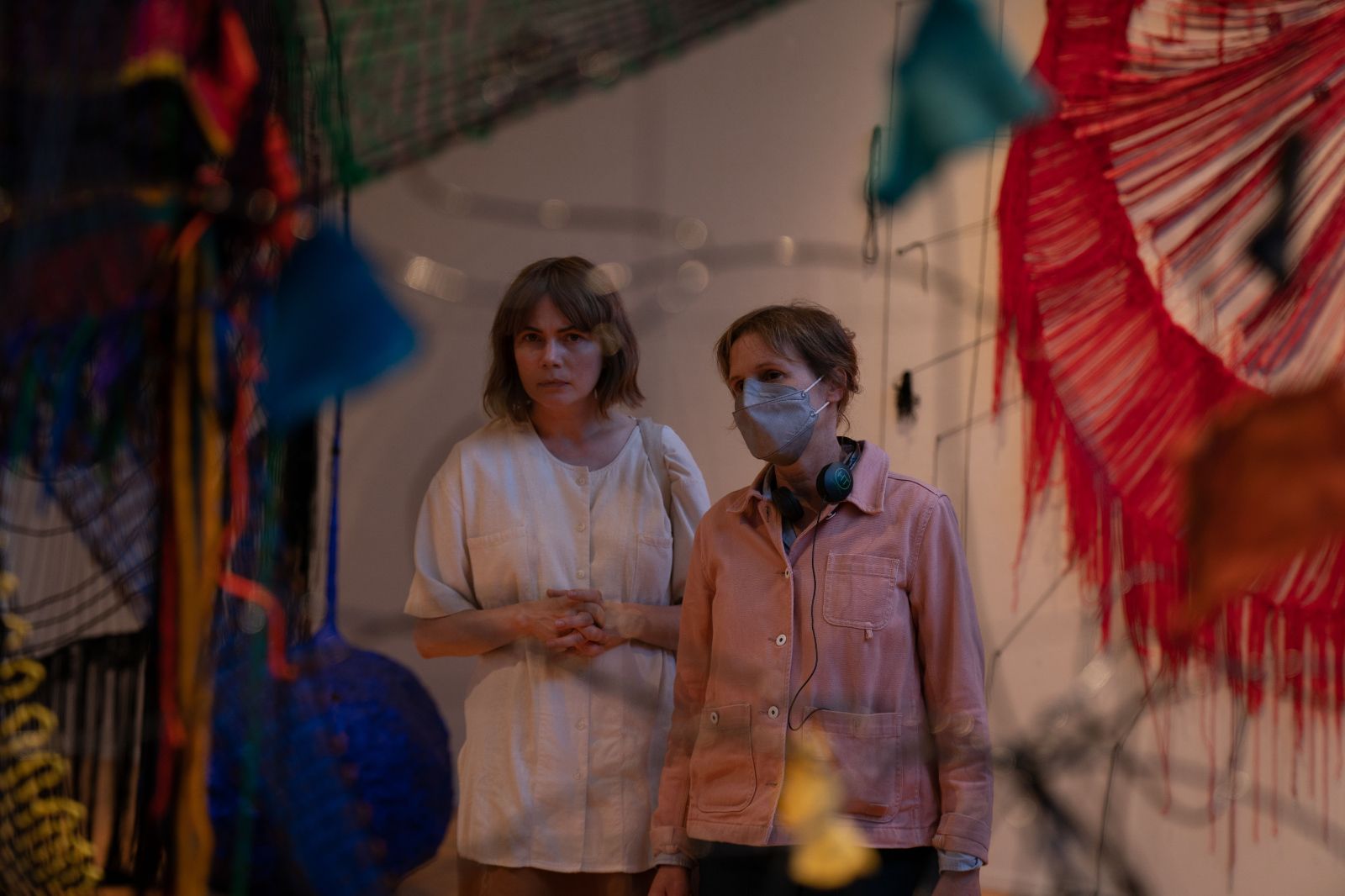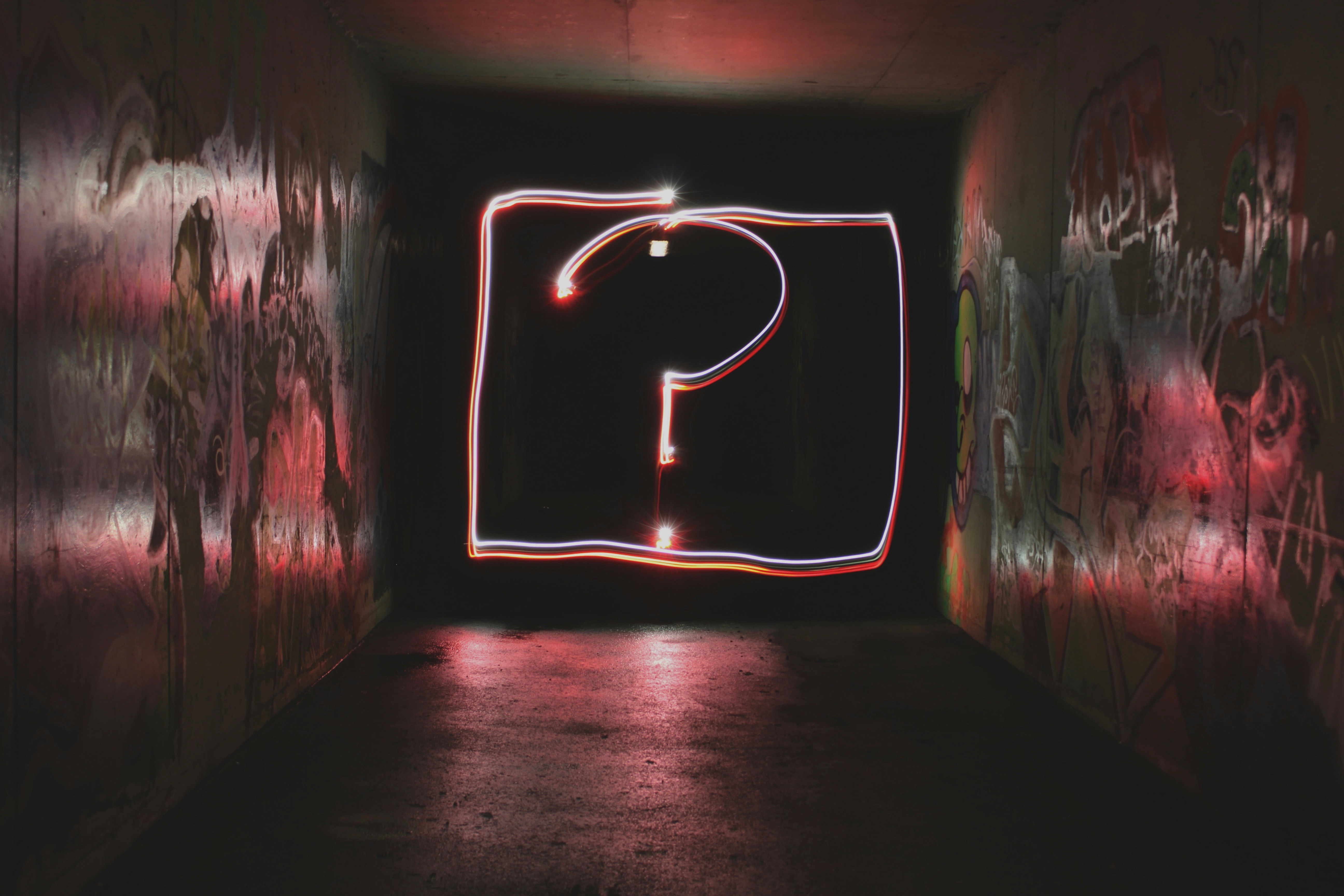
Kelly Reichardt & Michelle Williams on Finding the Art in Showing Up, Mike Leigh’s Influence, and What They’re Reading
Showing Up contains many of the hallmarks of a classic Kelly Reichardt picture: a Pacific Northwest setting, a Jonathan Raymond co-writing credit, Christopher Blauvelt cinematography, a rich ensemble cast, and an unrivaled attention to locations, production design, and wardrobe. There’s also Michelle Williams appearing in her fourth Reichardt film, their collaboration having begun with 2008’s Wendy and Lucy.
In Showing Up, Williams is Lizzy, a talented sculptor who finds herself a bit worn down by the realities of modern life. By all accounts she has a decent day job––something she likely wouldn’t refute––working in the office of the liberal arts college she attended. Outside of offering her rent and cat food money, the position keeps Lizzy plugged into the local art scene and most importantly grants her free access to the campus kiln (operated by André Benjamin in a joyful role).
Outside of Williams, that aforementioned strong ensemble includes Hong Chau as the carefree Jo, Lizzy’s college friend, current landlord and fellow artist. Jo is prepping two simultaneous art openings to Lizzy’s one. While Showing Up doesn’t explicitly acknowledge the often competitive nature between fellow artists in a small scene, it is certainly present. After his breakout in Reichardt’s First Cow, John Magaro stars as Lizzy’s older brother, whose mental issues and position as the anointed genius in the family draw to mind the sibling dynamic between Robert Crumb and his older brother Charles in Crumb. Judd Hirsch makes strong work in his brief screen time as Lizzy’s newly retired and porced father, who holds no qualms about his present routine spent watching TV and catering to an eccentric freeloading couple crashing in his living room. Showing Up manages the impressive feat of ping deep into Lizzy’s headspace while also ensuring those in her orbit are not mere set dressing, but rather inpiduals with their own complex histories and motivations.
I spoke with Reichardt and Williams over Zoom, where the pair discussed creating a backdrop of an active artmarking space within their liberal arts college set, Mike Leigh’s BBC films, and what they’re reading at the moment.
The Film Stage: You two have worked together on a number of films over the years. I’m curious what that initial process is like on a new project. Is it a phone call, a text, an email? Michelle, you’ve said that it involves a lot of books and film conversations. What were those for Showing Up?
Kelly Reichardt: I sent her a picture of Lee Bonteacu, perhaps with the script. I can’t remember what happened then. But it seemed to me that it was quite soon that we were shipping you a big block of clay and some tools. And Michelle, am I right that you started work kinda soon with Cynthia [Lahti]? I can’t really remember, honestly.
Michelle Williams: Yeah, we did. We jumped right in. Kelly always sends me images. There’s a lot of photographs that accompany each character that we work on together. So the images are the starting place. I still have the packets that you send me. I still have the Wendy and Lucy packet––those images that you were looking at. Kelly, what’s that movie––the Melanie Mayron movie?
Reichardt: Oh: Girlfriends, Claudia Weill’s film. Aw, I meant to invite Claudia Weill to the screening tonight and I forgot. Anyway, Claudia Weill’s Girlfriends––that was a good starting point.
Williams: That was a great starting point. And Mike Leigh.
Reichardt: What Mike Leigh? I think I was screening Grown-Ups with my class that semester.
Williams: Bleak Moments.
Reichardt: Oh, Bleak Moments, right. And also A Bigger Splash, the Hockney film. It’s just a film about the process of making a single painting. It’s so funny: that film was so hard to find, and then the second when I was done shooting, I was like “Oh, my God, that film is everywhere right now suddenly.” It’s just funny how things appear in the world. The Black Mountain College was a huge source of inspiration. I’ve been reading about that place forever and I actually went and visited it once. And there’s been so many Anni Albers shows––her stuff has been shown so much over the past few years. That’s just a tipping point, and then all the various artists along the way that were inspiring in different ways. But definitely as a shooting-off point, the Black Mountain world was pretty good.
I worked at MOCA in Los Angeles when Helen Molesworth was there, and she curated that Black Mountain show at The Hammer.
Reichardt: Oh wow. That show was fantastic, right? That was a great show.
You’ve talked about seeing Fosse/Verdon and having this impulse to give Michelle more freedom on set. I’m curious what that actually looks like in practice. Did you tell her about this or did you just do it on your own?
Reichardt: I think––Michelle, correct me if I’m wrong––it entails knowing that we might start in a larger way: “Just start. Go for whatever you want.” And then work backwards from there. As opposed to beginning in a safer place. Just letting her use the full range of what she wants to dig into. You were talking about just the tone of your voice for a very long time. You could probably speak to this better than me, Michelle.
Williams: Those Mike Leigh films are so inspiring. The level of detail, that kind of character work, while you’re still convinced that it’s the real world. Oh, my God. There’s just nothing like what those actors accomplish together.
Reichardt: No one could have the Mike Leigh process in America. It’s unheard-of. Who could spend a year with… obviously he has a certain talent for it, and just the workshopping of it. We were talking about that group of films he made for the BBC around Bleak Moments. Nuts in May, The Kiss of Death––all of those.
A thing I love about Michelle’s character is her wardrobe. It’s a lot of muted colors: browns, off-white, grays. I think the most color in the film overall is that yarn-jumper a student dons in the beginning and the red glasses someone wears in the gallery at the end. So the entire film has this muted palette, but Michelle’s character in particular.
Williams: We spend a lot of time together––we always have. When we made Wendy and Lucy we went to stores together. We got with our costume designer, Amanda Needham, and we got in Kelly’s car and we drove all around town looking at this blue or that blue.
Reichardt: Thrift stores and Salvation Army.
Williams: And then I wound up wearing my own shirt.
Reichardt: I still have it. It’s in my closet.
Williams: Do you really?
Reichardt: Yeah. I can’t fit in it, though.
Williams: But we spend a lot of time together.
Reichardt: April Napier, the costume designer on Showing Up––we did a lot of work together before Michelle came. And then it’s about just overall thinking about colors. Michelle, you always say that “mousy” is the color I always pick for you. But I think Michelle feeling good in the clothes is a big part of it. April gives you a lot of selects.
Williams: We had a lot of options and we spent a long, long, long time narrowing it down and finding her shapes, finding her colors, finding socks.
Reichardt: And all of that was set up at the school, where we shot. Because the whole production was set up at Oregon College of Art and Craft, which was kind of a pivotal school in the Pacific Northwest for ceramics––before it closed. Because of COVID we were able to sneak in there and make a film and set up our whole production world. So Michelle could actually put on clothes and shoes and slop around at her office. It was all right there, which was nice.
I love all of those little details in the office. Are those things in the script? Like the dog that sits in the doorway of the office––is that written? Or do you get to set: “It would be funny if everyone had to step over this person’s dog.”
Reichardt: The script’s being updated at night when I come home. I found that dog on a scout. We went to look at this house and there was that giant dog, and she was so sweet, so then I wrote her into the script. A lot of the school and office stuff comes from my years, or decades, at Bard. When we got there it was completely empty, so a whole entire school had to be made up with what people would be doing in each room. Tony Gasparro, the production designer, and the art team basically brought in a bunch of art heads, art students, and recently graduated young artists and filled up the school with people making stuff. It became an active working place.
But the more time you spend in a place, the more ideas come to you. So as the school was developing, each day there’d be new things, and then at night I’d go home and work those things into the script. Because a dog won’t just show up unless it’s in the script for the dog to appear [Laughs] Neil Kopp and Anish Savjani, the producers, have to make that happen. So the school became an active place of artmaking. I could walk through that every day with my viewfinder and with Chris Blauvelt, and it’s all snowballing and growing into what it’s going to become.
I have to wrap up, but before you go: Kelly, I know you’re an avid reader, so I wanted to see if you’re reading anything that you’d recommend. And for you as well, Michelle.
Reichardt: I just found a new Dave Hickey book, Perfect Wave. It’s not that it’s new; it’s that I hadn’t read it. I read those Gwendoline Riley books that just came out––those were nice. But for art, I really love Dave Hickey.
Dave Hickey’s essays on basketball and Las Vegas in Air Guitar are two of my favorites.
Williams: You guys should check out 1-2-3 Magic, The Discipline Miracle, Your Three-Year Old: Friend or Enemy––incredible. [Reichardt and Williams both laugh] Your Self-Confident Baby and Simplicity Parenting.
Reichardt: There you go.
Williams: That’s my bedside.
Reichardt: That’s pretty good.
Showing Up opens in theaters this Friday.

































































